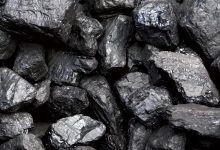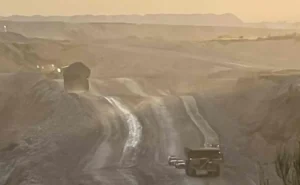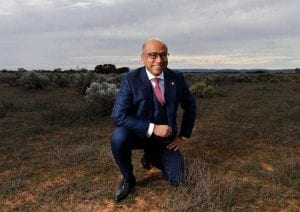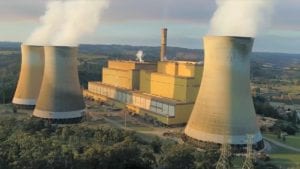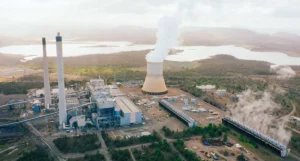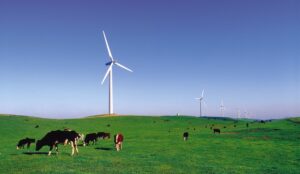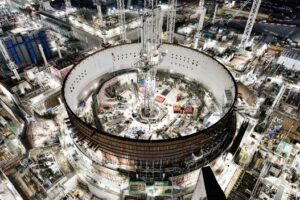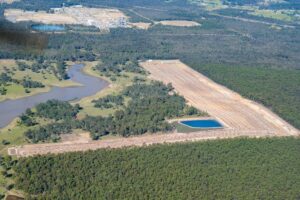“The world expects every country to do its duty”
with apologies to Horatio Nelson
The Federal Coalition strongly, if nervously, supported the National Energy Guarantee on Tuesday. However, it’s clear to most that the policy as it stands is not strong enough. The biggest sticking point is the difficulty of getting the emissions reduction target changed.
Despite the less than credible modelling results, despite the complexity, despite its lack of an economy wide impact, despite the fact that electricity is only 37% of Australia’s emissions, the NEG could be supported if the “ambition”, or emissions reduction target, could easily be increased.
The Federal Government needs to give something. At every turn it has nickeled and dimed its way to a position where it is promising and doing nothing other than providing a mechanism.
In taking a hard line position it has made electricity prices and emissions reduction targets an election issue. This is the exact opposite of what the NEG was supposed to achieve, that is to achieve some degree of bipartisanship so that the election could be fought on grounds both Shorten and Turnbull are happier with.
All that said we aren’t sure that Frydenberg/Turnbull have the authority, skill or desire to do more. If they want the policy to be a success they will have to. We will come back to prices in a further note. Prices are a great topic for an analyst.
Enough policy analysis lets get back to investment analysis.
HELE power stations and the NEG
HELE stands for high efficiency, lower emissions coal plant. To cut it short an HELE plant consumes about .32 t coal/MWh at Japan export specs, compared to our existing plants which are around .44t coal/MWh at domestic specs. CO2 emissions from a new super critical plant would be about .76 t CO2/MWh generated and a bit higher on a metered basis.
We’ll return to this point but coal used for domestic power stations has ash content 7-10% higher than export coal because its washed less. The higher ash content results in a lower price. There are probably other specification differences but ash content is the main one.
There is a reduction in emissions from HELE plant but it’s nothing spectacular.
Even the proposed 26% NEG means no net increase in coal generation
Under the proposed NEG, that is 26% reduction by 2030 from 2005 levels any new coal plant would result in either another coal plant having to close or a reduction in output from other coal plants of broadly 80-85% of the output from any new plant. That is the good news in the proposed NEG.
It effectively means no new coal plants without an increase in demand because the 26% reduction can’t be met with additional coal supply. Reaching the target already assumes the closure of Liddell.
HELE economics, just give me the numbers
In this section we contemplate a new, HELE coal plant located in NSW on the site of an existing power station as we think Mr T. St Baker proposes, once he gets through buying the 50% of Sunset Power he doesn’t already own. We discuss coal prices, coal supply, capital costs, the NEG constraint and risk.
If that’s of interest read on.
Coal prices
There is no point, in my opinion, building a state of the art coal plant and running it on anything less than the best coal you can get.
So a new HELE plant would essentially be paying net back export parity price for coal. I.e. its coal cost will be about 10% higher than the coal cost of existing sub critical plants in NSW that run higher than export spec ash in the coal.
The ACIL Tasman study for the ESB used a long term export coal price of US$60/t. However KPMG does a quarterly survey with a long term price of US$65 real. Its projections to 2022 and ITK 2% inflation adjusted post 2022 prices are as follows:

Coal futures are 20% higher still and sitting at US$90 for 2024. Still futures markets are poor predictors of future prices so we ignore them, but could be a good trade.
My opinion is that new coal mines in NSW actually require more like US$70-US$75/t, but I defer to the survey weight of evidence.
Where would the coal come from?
This depends on where the power station was located. If, as Mr St Baker hints, it’s on the site of Vales Point B, that is the Central Coast of NSW, then we think a potential source of supply is the contentious, yet to be developed, Wallarah 2 mine rated at a potential 5 mtpa output.
As far as we know this mine’s approval is in court in November this year with NSW Govt’s January 2018 approval being challenged by the Australian Coal Alliance [ACA].
The ACA has been fighting this mine proposal for 23 years. Final approval even if the ACA loses rests with Josh Frydenberg and he has extended his decision until September 2018. Central coast seats are important both at a State and Federal level.
The only other brownfield site available in NSW in the near future is Liddell and we can’t see Mr St Baker being allowed onto that site in a big hurry. We can’t see Mt St Baker waiting until say Eraring closes in 2032 and we expect the difficulties to be a lot higher then anyway.
Capital costs
If Mr St Baker says he can build a HELE plant for $2.5 m/MW on a brownfields site, that is with existing water cooling and transmission access and do it in 4.5 years from the start of construction then we are inclined to believe him.
The St Bakers, have very solid track records, although not at building multi billion dollar coal stations. Trevor St Baker’s expertise is mostly in building gas powered stations, and to me it seems that every one was a struggle.
Still ,over his already more than 60 years in business he’s built quite a few. He’s also on the Board of the increasingly successful Tritium EV charging company.
If all production is committed under a PPA some hedging would be required
Traditionally coal plants do not hedge all their output. Some is sold into the spot market to reduce outage risk. A 1000 MW plant of say two units carries significant outage risk if it is the only plant the operator owns. Hedging just one unit carries lots of spot risk, hedging two units carries lots of outage risk.
These risks don’t matter so much when your capital investment is $1 m but matter a lot more when its $2.5 bn. So we think some hedging/spot cost will push the LCOE above what you might think.
At a 70% capacity factor LCOE is ……
Taking into account the above factors and at a capacity utilization of 70% we estimate an LCOE of around $70 MWh nominal 2018 or about $80 MWh when the plant could start operating in 2024.
Of course if had Federal financial support, via a contract for differences/ppa, low interest loan then the required price would be lower. How much lower depends on the degree of support.
Carbon/higher NEG target risk
Under the NEG framework the NEG target risk lies with the retailer/market customer not the generator. If the HELE plant is fully contracted with an exempt customer then there is no risk to the HELE plant operator, unless the export exemption is removed.
So if the NEG ambition is lifted over the next 30 years then the risk falls on everyone else. That is every other retailer/market customer….
To us this highlights the increased value of exemption, but also the risk that as the NEG net is tightened so will the risk of exemption removal.
If the plant is contracted with a non exempt customer then the risk is that the customer can only take so much of the HELE plant output and must meet annual emission intensity target, which is about 0.66 tCO2/MWh in 2030 based on electricity supply of 198 TWh and 130 mt of CO2.
Actually, though, if we allow say 15% of total demand to be exempt then the adjusted intensity is about 0.56 mtCO2/MWh.
So HELE intensity =0.76, baseline = 0.56, required zero emission share of retailer contracting a basket of HELE and zero intensity product is about 24%. Finally the proportion might be adjusted down that is to more intensive average by the use of the 5% foreign units allowed.
For the overall NEM wide target to be met, and assuming flat demand, any new coal plant will have to be matched with an equal amount of emissions reduction. In practice we think this would mean the closure of some other coal plant. EG Vales Point 2. In fact you don’t get your brownfields site unless that happens.
Conclusion
A brownfields HELE plant would be cheaper than a brand new HELE plant and would produce electricity at a price, that in my opinion, is broadly similar to power from a grid which is mainly a mix of variable renewable energy [VRE] and sufficient firming capacity. However, there are few brownfields sites and there will be issues.
The bigger points though are:
From the financier and customer point of view, the risk is that emissions standards will tighten harming the economics.
From the system’s point of view, building new coal plants seems to miss the once in 50 year opportunity to reconfigure the grid from the 20thcentury to the 21stcentury.
It basically slows down the emissions reduction path. This raises overall emission reduction costs across the entire economy. It means bigger emission cuts in land use, or in industry or in building and construction.
In the end I come back to the contention that anything deviating from transitioning to a reliable, firmed renewable grid will end up costing Australians and Australian business more in the long run.
Lets keep our eyes on the main prize which is ranking well on the global Trilemma index. Cost, reliability, sustainability. Doing a good job on transitioning to low carbon is what will ensure globally competitive electricity for consumers and business over the next 50 years.

